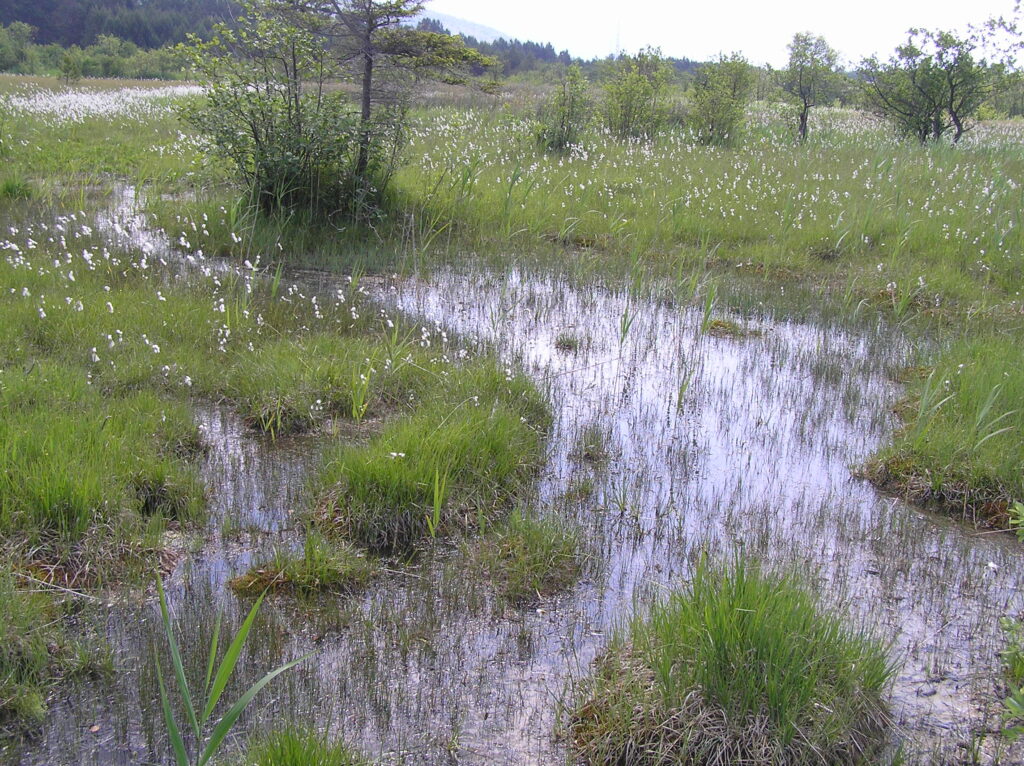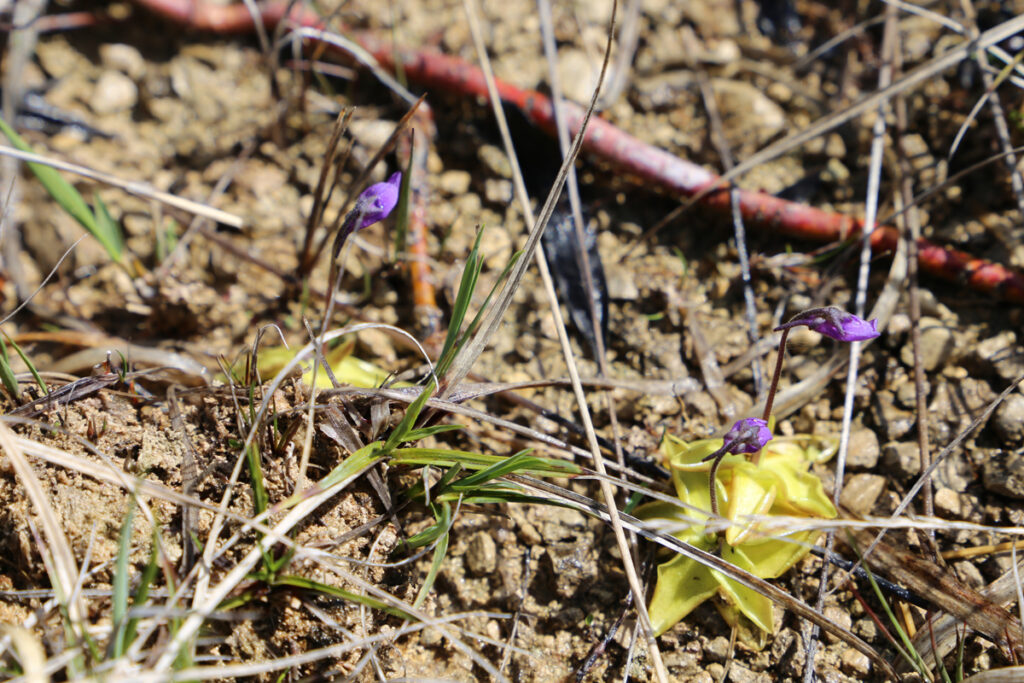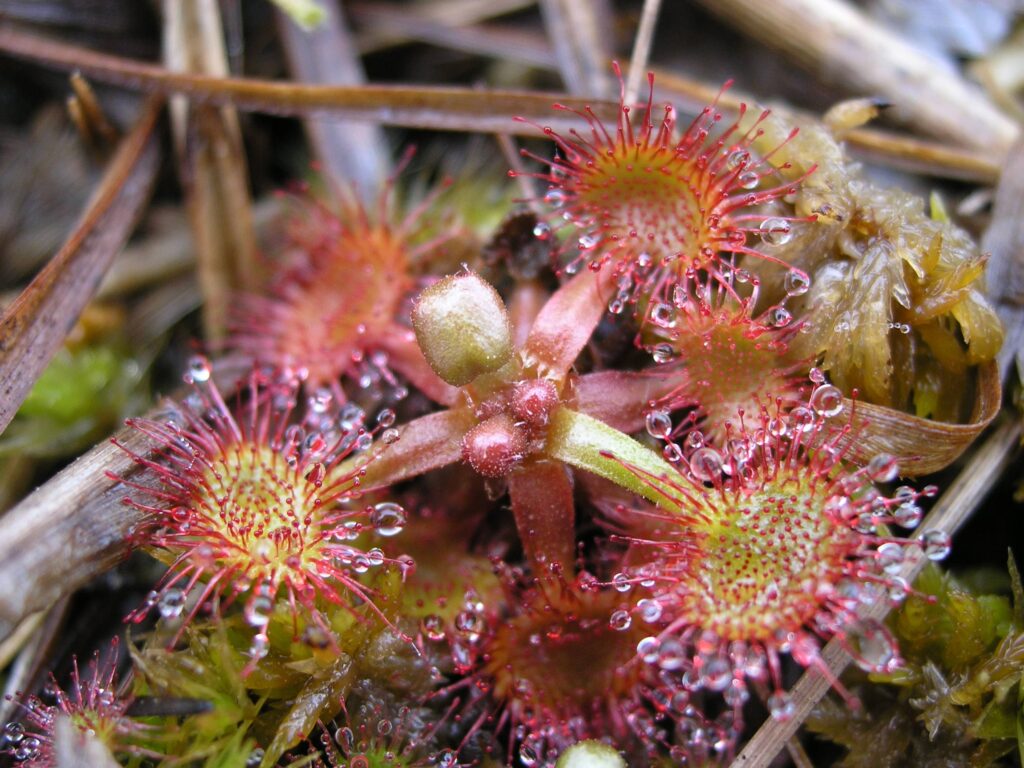Bogs are moist habitats constantly covered by water, in which organic matter, due to the prevailing conditions, decomposes very poorly. More specifically, it is colder, the soil and plants are constantly saturated with water, and there is a lack of oxygen. In such conditions, deposits of plants, which we call peat, are formed, which additionally contribute to the increase of anoxia and water retention and they slow down decay.
There are basophilic and transitional bogs in the area of the Plitvice Lakes National Park. Basophilic bogs are soaked in water that seeps from the surrounding hills and is retained due to the impermeable substrate. Transitional bogs develop on an acidic substrate (acidophilic bogs) under the predominant influence of the underground water of the acid reaction.

Bogs are characterised by a lack of nutrients, which is why we find very few plant and animal species in these habitats that are very well adapted to the conditions prevailing in such habitats.
Basophilic bogs in the Park are dominated by low sedges, and in addition to some orchids and mosses, here we also find the common butterwort, a carnivorous plant. In addition to various bog mosses, on the transitional bogs there are the common cottongrass, star sedge and other interesting plant species, but also two types of carnivorous plants, the lesser bladderwort and the common sundew.
Carnivorous plants are a small group of plants that, due to the lack of nutrients in the soil where they grow, have developed mechanisms for capturing animal prey. These are mostly small insects, so they are often called insectivorous plants. Nine species are known in Croatia, and three species have been recorded in the Park: the common sundew (Drosera rotundifolia), the common butterwort (Pinguicula vulgaris) and the lesser bladderwort (Utricularia minor). All three species grow on the bog habitats of the Park.

The common butterwort Pinguicula vulgaris (PLNP Archive) 
The common sundew Drosera rotundifolia (PLNP Archive) 
The lesser bladderwort Utricularia minor
As bogs are remnants from ancient times when the climate was colder and wetter, these habitats are slowly disappearing due to climate change. Here, in the karst area from which the water quickly leaves, it is not even an ideal habitat for them. They have remained in only a few micro-locations and are under the further threat of accelerated disappearance due to human action by drying, due to the succession that creates a shadow for them that the bogs do not tolerate, and the increasingly hotter and drier climate certainly has an impact.
In order to protect the biodiversity of the Park, as well as the whole of Croatia, it is necessary to preserve the bogs. The plant species that live in this type of habitat are few in number, but they are unique, and their loss would significantly affect the diversity and uniqueness of Croatia’s flora.
Read other interesting stories from the Plitvice Lakes National Park

